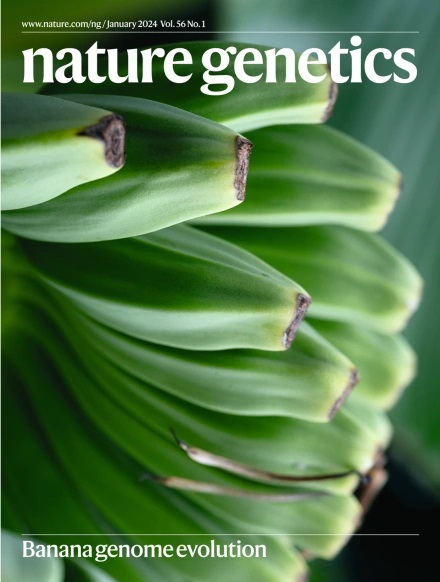An integrated transcriptomic cell atlas of human endoderm-derived organoids
IF 31.7
1区 生物学
Q1 GENETICS & HEREDITY
引用次数: 0
Abstract
Human pluripotent stem cells and tissue-resident fetal and adult stem cells can generate epithelial tissues of endodermal origin in vitro that recapitulate aspects of developing and adult human physiology. Here, we integrate single-cell transcriptomes from 218 samples covering organoids and other models of diverse endoderm-derived tissues to establish an initial version of a human endoderm-derived organoid cell atlas. The integration includes nearly one million cells across diverse conditions, data sources and protocols. We compare cell types and states between organoid models and harmonize cell annotations through mapping to primary tissue counterparts. Focusing on the intestine and lung, we provide examples of mapping data from new protocols and show how the atlas can be used as a diverse cohort to assess perturbations and disease models. The human endoderm-derived organoid cell atlas makes diverse datasets centrally available and will be valuable to assess fidelity, characterize perturbed and diseased states, and streamline protocol development. The human endoderm-derived organoid cell atlas (HEOCA) presents an integrative analysis of single-cell transcriptomes across different conditions, sources and protocols. It compares cell types and states between models, and harmonizes cell annotations through mapping to primary tissues.


人类内胚层来源类器官的整合转录组细胞图谱
人类多能干细胞和组织驻留胚胎和成体干细胞可以在体外产生内胚层起源的上皮组织,再现发育和成人生理学的各个方面。在这里,我们整合了来自218个样本的单细胞转录组,这些样本涵盖了类器官和其他各种内胚层来源的组织模型,以建立一个初步版本的人类内胚层来源的类器官细胞图谱。该集成包括跨越不同条件、数据源和协议的近100万个单元。我们比较了类器官模型之间的细胞类型和状态,并通过映射到初级组织对应物来协调细胞注释。重点关注肠和肺,我们提供了来自新方案的制图数据示例,并展示了如何将图谱用作评估扰动和疾病模型的多样化队列。人类内胚层来源的类器官细胞图谱使各种数据集集中可用,对评估保真度、表征紊乱和病变状态以及简化方案制定具有价值。
本文章由计算机程序翻译,如有差异,请以英文原文为准。
求助全文
约1分钟内获得全文
求助全文
来源期刊

Nature genetics
生物-遗传学
CiteScore
43.00
自引率
2.60%
发文量
241
审稿时长
3 months
期刊介绍:
Nature Genetics publishes the very highest quality research in genetics. It encompasses genetic and functional genomic studies on human and plant traits and on other model organisms. Current emphasis is on the genetic basis for common and complex diseases and on the functional mechanism, architecture and evolution of gene networks, studied by experimental perturbation.
Integrative genetic topics comprise, but are not limited to:
-Genes in the pathology of human disease
-Molecular analysis of simple and complex genetic traits
-Cancer genetics
-Agricultural genomics
-Developmental genetics
-Regulatory variation in gene expression
-Strategies and technologies for extracting function from genomic data
-Pharmacological genomics
-Genome evolution
 求助内容:
求助内容: 应助结果提醒方式:
应助结果提醒方式:


